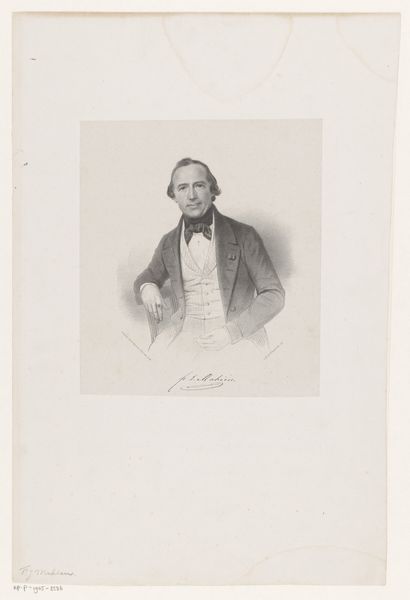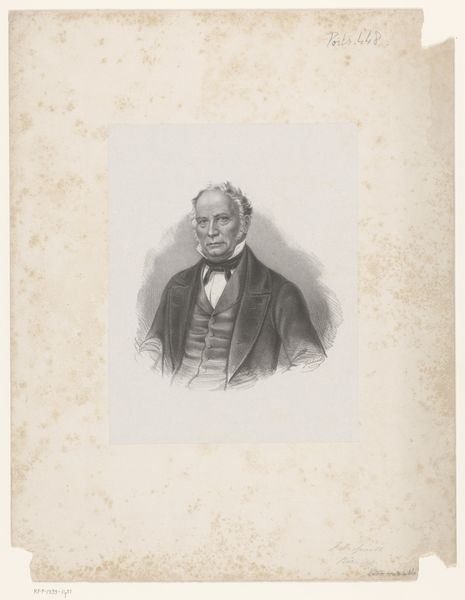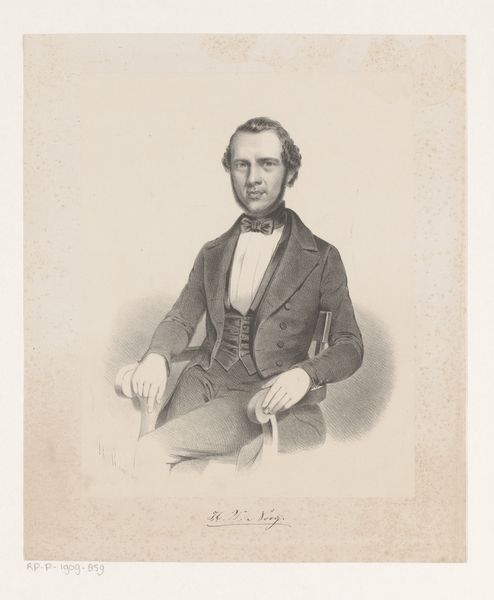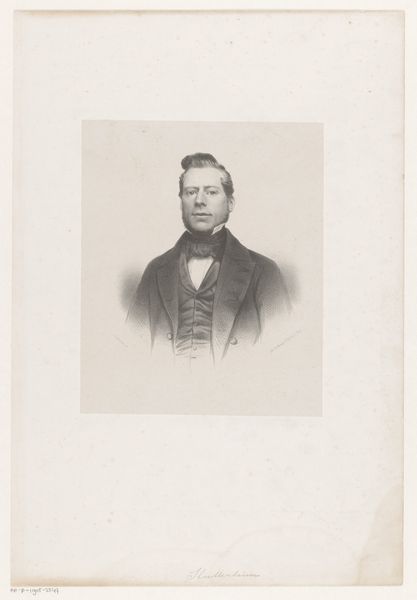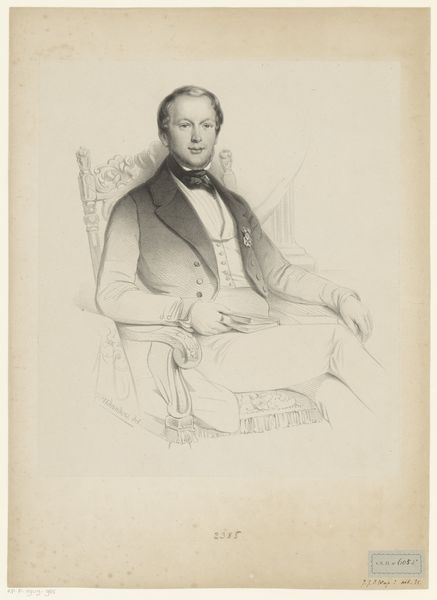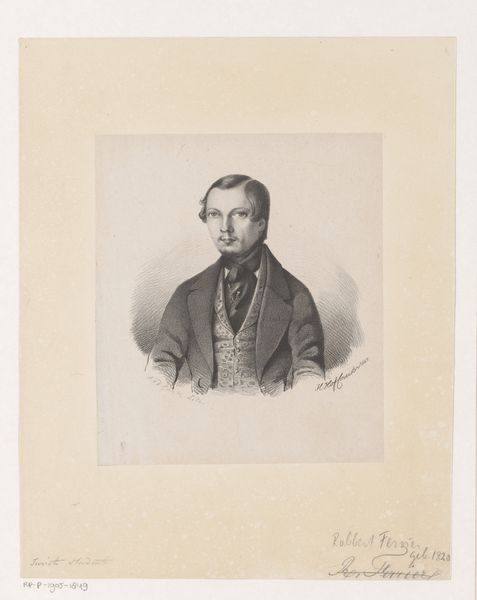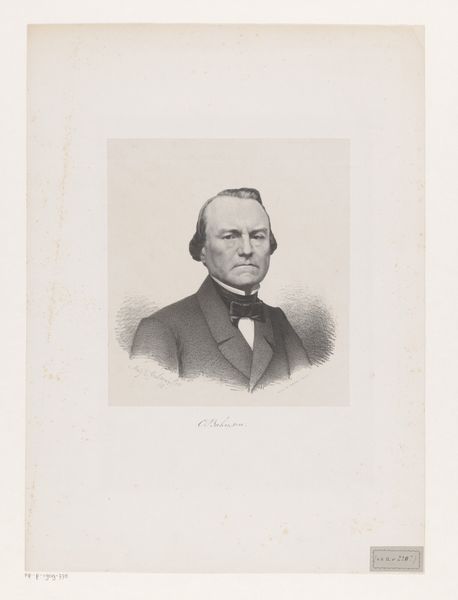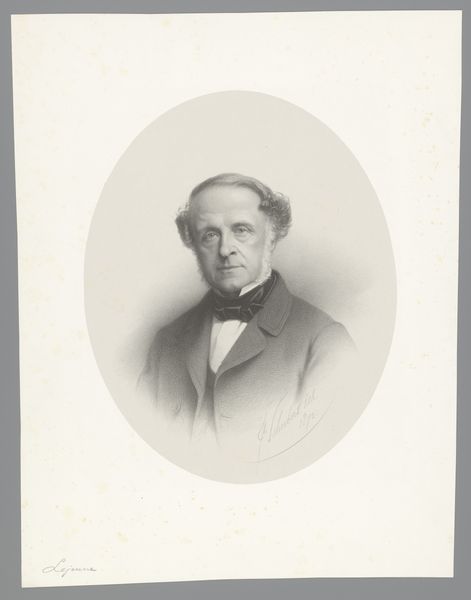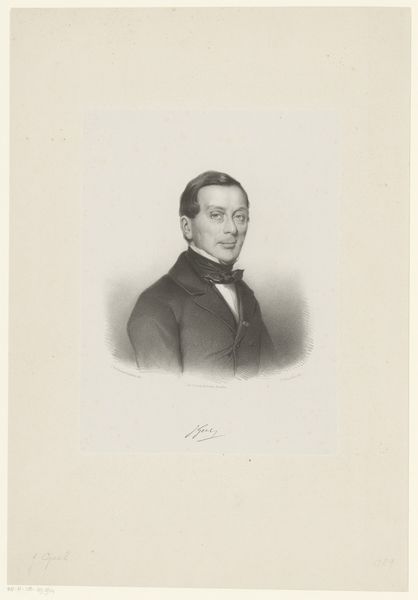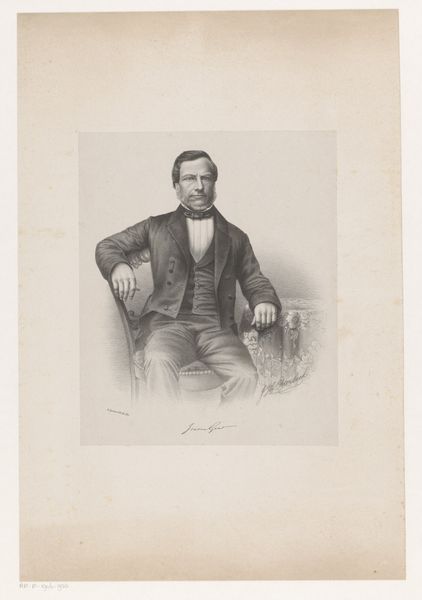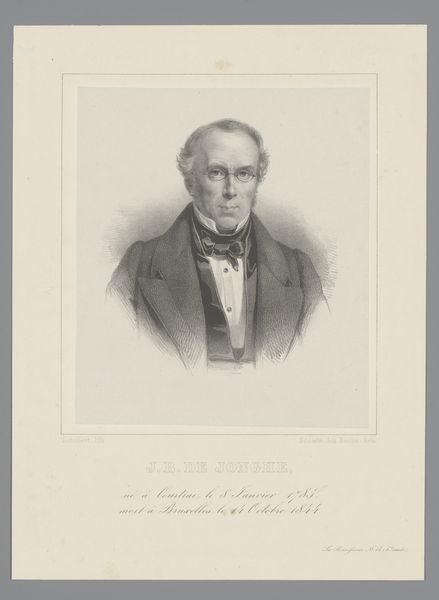
drawing, pencil, graphite
#
portrait
#
pencil drawn
#
drawing
#
light pencil work
#
pencil sketch
#
personal sketchbook
#
portrait reference
#
pencil drawing
#
pencil
#
limited contrast and shading
#
graphite
#
portrait drawing
#
pencil work
#
tonal art
#
academic-art
#
realism
Dimensions: height 552 mm, width 400 mm
Copyright: Rijks Museum: Open Domain
Curator: Let's take a look at this subtle portrait of Henri Auguste d'Anethan by Joseph Schubert, created in 1861. It’s currently held at the Rijksmuseum. What's your first impression? Editor: Intimate, and somehow melancholic. He seems a bit…resigned, doesn’t he? I immediately notice the soft pencil work, the almost palpable grain of the paper itself. It invites closeness. Curator: Indeed. Notice the medium—pencil, graphite on paper. Schubert seems less interested in a flamboyant display of wealth and status and more concerned with capturing a certain...likeness, wouldn’t you say? It’s like he's looking straight at us from across the years. Editor: It’s precisely the "on paper" aspect that fascinates me. Graphite—the raw material dug from the earth, ground, refined, pressed into service to render a portrait. It's about process; from extraction to exquisite shading on a surface made from processed wood pulp, isn't it? How readily we gloss over all this making when discussing “art." Curator: It’s tempting to think of this piece as mere documentation, almost scientific, but it's also undeniably artistic. It almost gives a feel of stepping into the man’s world and mind in an emotional way, just by the position that he holds. Editor: I agree, but I am captivated by thinking of the economic and material conditions which provided d’Anethan with the leisure to pose and Schubert with the material means to produce the portrait. D’Anethan, a prominent Belgian politician and diplomat in the 19th century, represents the ruling class—with their manufactured suits and hats to match their self-importance. Curator: He looks at us and it also creates a moment. We see a man, almost unassuming, waiting to be properly "taken in" by us viewers. It’s almost a conversation we were just pulled into without any cue. This could be a moment captured perfectly by Joseph Shubert with nothing but graphite and paper. Editor: True. So, in the end, we find both an immediacy—the delicate touch of pencil on paper—and a slow reveal, uncovering the material layers propping up the social world on display. Thank you.
Comments
No comments
Be the first to comment and join the conversation on the ultimate creative platform.

